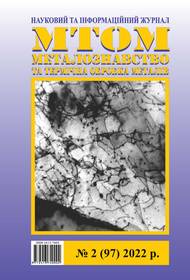Some features of using steel when renovation of buildings and structures
DOI:
https://doi.org/10.30838/J.PMHTM.2413.050722.33.858Keywords:
steel, steel tanks, regulatory requirements, fast construction, block-modulesAbstract
Problem statement. Steel as a material with high strength properties is very widely used in construction. But its production processes are associated with high energy consumption, and its availability in the country can vary significantly. The use of this material should always be seriously substantiated. Ukraine is currently in a temporary situation when, on the one hand, metal production has fallen sharply, while, on the other hand, in construction its needs have increased significantly. Purpose of the article. Firstly, the authors show some ways of significantly reducing metal consumption while providing a sufficient level of reliability by using the example of steel tanks for storing oil and petroleum products. All the authors' proposals are based on numerous data of tanks field inspections that have been in operation for 20…30 years or more. Secondly, the article gives examples of steel effective use in the renovation of old and partially destroyed civilian buildings made of brick and reinforced concrete. Some proposals for the fast mass construction of housing are considered, which is also very relevant today, and also, as in the buildings renovation, requires the steel costs. Conclusions. Today in Ukraine the demand for steel has increased, on the one hand, and at the same time, its production has decreased. This requires the involvement of all opportunities for more efficient use of steel in building structures, namely: the wider use of thin-walled structures, the use of effective rolled profiles, comprehension and adjusting regulations, which unreasonable steel costs are included.

Downloads
Published
Issue
Section
License
Authors that are published in this journal agree to follow the conditions:
Authors reserve the right to the authorship of his work and cede the right to the journal of first publication of this work on conditions of the license under the Creative Commons Attribution License, which allows others to distribute it freely with the obligatory reference to the author of the original work and the first publication of the work in this journal.
